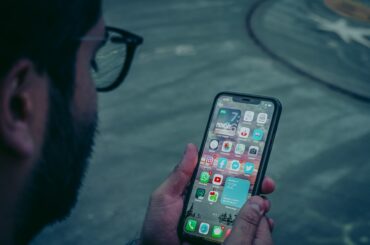How do the touch screens of mobile phones work? It’s a question that anyone of us has wondered about at someday in our life. Mobile phones are like the breath of people. After all, we can’t live without mobiles. Though there is no need, everyone carries a mobile in their hand. It is like carrying a screen in hand. But the technology behind these screens is quite fascinating. In this article, we’ll deeply investigate how the touch screens of mobile phone works. Today’s article includes the inner workings of touch screens, everything from their history to their different types and how they function.
Touch Screens: A Brief History
The concept of touch screens can be drawn back to the 1960s when researchers at the Royal Radar Establishment in the UK developed a system called “Elograph.”, Elograph used a grid of wires embedded in a thin layer of plastic with a sheet of glass placed over the top. When a user touches the glass, the wires can detect the touch’s location.
However, it was in the 1980s that touch screens began to see general commercial use. The Hewlett-Packard HP-150 computer, introduced to the public in 1983, was the first touchscreen device to enter the market. The touch screen on this device was capacitive.
Since then, touchscreen technology has developed consistently, with mobile phones significantly contributing to its novelty. Touch screens can be found on various devices, including laptops, tablets, car dashboards, and kitchen appliances.
Various Touch Screen Types
There are various touchscreen designs, and each has benefits and drawbacks. The most typical varieties include:
Resistive touch screens: These screens have two conductive layers spaced apart by a small gap. The layers of the screen come into contact when a user presses on it, changing the electrical resistance, which can then be measured to regulate where the touch is made. Manufacturing resistive touch screens are simple and reasonably inexpensive. However, they must be more accurate and need a stylus or other pointed object to function correctly.
Capacitive Touch Screens: A conductive material layer is used on capacitive touch screens to detect touch. A small electric charge is transferred to the screen when a user touches it with their finger. The position of the touch can be determined thanks to sensors placed around the edges of the screen, which will recognize this charge. Although capacitive touch screens don’t need a stylus and are typically more accurate than resistive ones, their production costs can be higher.
Infrared touch screens: A range of infrared sensors on infrared touch screens detects touch. When a user touches the screen, the break in the grid brought about by their finger can be detected and used to pinpoint where the touch was made. Although infrared touch screens are exact and can be used with any object, they can be relatively pricey, and their performance may be hampered by ambient light.
Surface acoustic wave touch screens: Surface acoustic wave touch screens use ultrasonic waves to detect touches. The waves are interrupted when a user touches the screen, and the location of the touch can be identified using the pattern of the interruption. Although accurate and capable of multi-touch gestures, surface acoustic wave touch screens can be expensive. Environmental elements like moisture or dirt could impact them.
How do the touch screens of mobile phone work?
Different processes are used in mobile touch screens depending on the technology used. Mobile devices’ most widely used touchscreen technologies are capacitive and resistive touch screens.

The electrical charge on a capacitive touch screen is released when you touch it with your finger, and the touch is registered. This technology, which offers multi-touch controls like pinch-to-zoom, is widely used on smartphones and tablets.
On the other hand, resistive touch screens function by sensing pressure applied to the screen. They are made up of two conductive thin layers that are spaced apart by a narrow gap.
Furthermore:
The layers touch when pressure is applied to the screen, and the touch is registered. This technology is less accurate than capacitive touch screens and does not support multi-touch gestures. Devices like industrial handhelds and outdoor displays frequently engage in resistive touch screens.
In both situations, the touch screen is linked to a controller that decodes the touch input and sends it to the device’s operating system, executing the necessary action.
The conductive qualities of human skin cause changes in the electrical field that the touch screens of mobile phones use to detect either pressure applied to the screen or changes in the electrical field. After being registered and interpreted by a controller, these touches are communicated to the device’s operating system, which uses the input to take the necessary action.
Mobile devices use capacitive touch screens most frequently because they allow for multiple touch gestures and better precision. In contrast, resistive touch screens are typically used in rough devices. Regardless of the technology used, touch screens have become an essential component of modern mobile phones, enabling in-built and interactive user interfaces that have transformed how we use and interact with our devices.
Read more to see the magic inside: How Can Phones Get Viruses from Websites?: Shocking 10-facts





